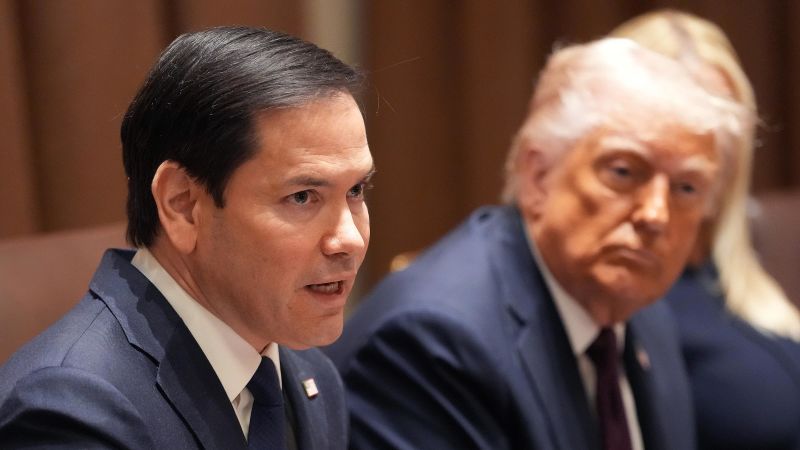On Tuesday, Secretary of State Marco Rubio unveiled the initial phase of a significant overhaul of the U.S. State Department, a move that aims to streamline operations and eliminate what officials describe as unnecessary bureaucracy. The initiative includes the closure of 132 domestic offices, the anticipated reduction of nearly 700 positions in Washington, D.C., and the discontinuation of specific offices that focused on war crimes and global conflict. This plan, as reported by senior State Department officials and documents acquired by CNN, is part of a broader strategy to enhance the department’s effectiveness and relevance in an ever-evolving global landscape.
State Department officials have argued that these restructuring measures are crucial for the agency to adapt and thrive. Describing the current organizational structure as “bloated,” a senior official indicated that the existing system had negatively impacted the U.S. foreign policy agenda. The rationale behind this sweeping change stems from a desire to create a more efficient operational framework that aligns with the administration’s goals. The overarching aim, as articulated by Rubio, is to refocus the department’s resources toward advancing American interests and supporting U.S. citizens more effectively.
While the reorganization plan has been characterized as groundbreaking, it is important to note that the senior official stated immediate layoffs would not occur, even though the implications for the workforce could lead to job losses down the line. Specifically, the reduction of approximately 700 positions at the State Department headquarters signifies a move towards a leaner structure that policymakers believe will ultimately serve the nation’s interests better.
Rubio expressed his commitment to enhancing the capabilities of the department in a post on X (formerly Twitter), stating, “Today is the day. Under @POTUS’ leadership and at my direction, we are reversing decades of bloat and bureaucracy at the State Department. These sweeping changes will empower our talented diplomats to put America and Americans first.” This statement underscores the administration’s focus on reorienting priorities within the department to support strategic objectives.
The proposed reorganization will see the total number of offices at the State Department reduce from 734 to 602, reflecting the administration’s intent to align the department structurally with its vision for U.S. foreign affairs. This realignment will initiate the reorganization process, with a particular focus directed at domestic offices rather than overseeing operations at embassies and consulates abroad. This move has stirred considerable anxiety among State Department employees, fueling concerns about job security and the potential impact on ongoing diplomatic missions worldwide.
The detailed mechanisms for this reorganization are still forthcoming. Instead of providing exhaustive specifics, the initiative assigns undersecretaries the responsibility of devising actionable plans, which will be presented to leadership for implementation by the targeted date of July 1. This approach suggests a level of decentralization in decision-making, enabling department heads to tailor the reformatting to their specific areas of oversight.
It is worth noting that this reorganization was conceptualized early in the Trump administration and represents only one aspect of the anticipated changes within the State Department. Further alterations, particularly concerning overseas posts, are expected to emerge as officials continue to refine the department’s operational framework.
As the situation develops, details will continue to unfold regarding the far-reaching impacts of Rubio’s announced reorganization plan. The changes at the State Department signal an important shift in the philosophy governing U.S. diplomacy, and ongoing updates will provide clarity on the program’s implementation and potential consequences for the workforce and international relationships.



